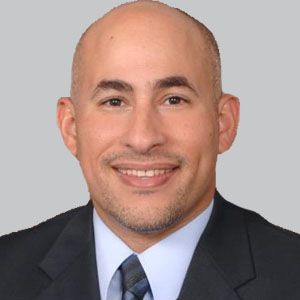In a new analysis of the phase 3 PROPEL trial (NCT03729362), findings revealed that switching from alglucosidase alfa/placebo (alg/pbo) to cipaglucosidase alfa (Pombiliti)/miglustat (Opfolda)(cipa/mig) treatment resulted in significantly improved motor function and quality of life (HRQoL) in patients with late-onset Pompe disease (LOPD). These findings highlight the patient perspective and provide evidence of the positive impact of switching to cipa/mig, an FDA-approved 2-component agent, in this patient population.1
In the majority of motor function and patient-reported outcomes (PRO) measures, group-level analyses favored cipa/mig versus alg/pbo with nominal significance for walking tests and domains ‘ability to move around’ and ‘energy level,' on the Subject Global Impression of Change's (SGIC). In the patient-level responder analyses, results demonstrated a greater proportion of patients improved with cipa/mig versus alg/pbo for most of the PRO measures. Notably, differences in proportions of responders between cipa/mig versus alg/pbo were nominally significant for SGIC’s ‘overall well-being,’ ‘ability to move around,’ ‘muscle function,’ and ‘energy level.
Clinical Takeaways
- Switching to cipa+mig therapy demonstrated significant improvements in motor function and quality of life for patients with late-onset Pompe disease (LOPD), as revealed by a new analysis of the PROPEL trial.
- Group-level analyses favored cipa+mig over alg+pbo in various aspects of motor function and patient-reported outcomes, indicating the therapy's potential benefits.
- The findings from this new analysis offer promising insights for healthcare professionals and patients with LOPD, suggesting that cipa+mig therapy may be a valuable treatment option for patients.
These findings were presented at the American Association of Neuromuscular & Electrodiagnostic Medicine (AANEM) meeting, held November 1-4, in Phoenix, Arizona, by lead author Hani A. Kushlaf, MD, FAAN, FANA, FAANEM, associate professor and director of the Neuromuscular Medicine Fellowship, University of Cincinnati, and colleagues. In this analysis, the investigators assessed the impact of switching from alg/pbo to cipa+/mig on motor function and HRQoL in the prespecified population of enzyme replacement therapy (ERT)-experienced patients in PROPEL.
READ MORE: Open-Label PROPEL Study Results Highlight Longterm Impact of Cipaglucosidase Alfa and Miglustat in Late-Onset Pompe Disease
The PROPEL trial assessed the efficacy and safety of cipa/mig compared with alg/pbo in mainly ERT-experienced adults with LOPD. The study included assessments of motor function such as the 6-minute walk test; gait, stairs, Gower maneuver, and chair. The trial also evaluated PROs such as EuroQol-5-Dimension-5-Level, Rasch-built Pompe-specific Activity, SGIC, and PROs Measurement Information System among patients treated with the therapy.
The group-level analyses estimated least square mean between-group differences in motor function and PRO change from baseline to week 52, adjusting for patients' age, gender, height, weight, and ERT status. Following that, patient-level responder analyses of PROs using chi-square or Fisher's exact tests compared the proportion of patients satisfying literature-based responder thresholds.
In another analysis of PROPEL presented at AANEM 2023, findings showed that treatment with cipa/mig was effective in patients with LOPD for up to 104 weeks, highlighting the long-term sustained impact of this combination approach.2 The study included 119 patients from the original double-blind trial entered the open-label extension, 91 of which were ERT-experienced and 28 who were ERT-naïve. At 104 weeks, the mean change in percentage predicted 6-minute walk distance change was +3.1 (SD, 8.07) for ERT-experienced patients who continued on with cipa/mig (n = 82) vs –0.5 (SD, 7.76) for those who switched from alg/pbo (n = 37).
Over the same time, investigators observed changes of +8.6 (SD, 8.57) and 8.9 (SD, 11.65) for ERT-naïve patients in the cipa/mig and alg/pbo groups, respectively. Forced vital capacity (FVC), a measure of lung function, was improved through treatment. At the conclusion of the analysis, mean change in percentage predicted FVC was –0.6 (SD, 7.50) for the cipa/mig group and –3.8 (SD, 6.23) for the switch group in ERT-experienced patients, and –4.8 (SD, 6.48) and –3.1 (SD, 6.66) in ERT-naïve patients, respectively.
The 2-component therapy, marketed by Amicus Therapeutics, also improved biomarker levels of creative kinase and hexose tetrasaccharide over the 104-week stretch. During that time, treatment with the combination medication did not result in any new safety signals, with 3 noted patients discontinuing treatment because of infusion-associated reactions of urticaria, urticaria and hypotension, and anaphylaxis.
Click here for more coverage on AANEM 2023.
REFERENCES
1. Kushlaf H, Byrne BJ, Claeys KG, et al. Switching Treatment From Alglucosidase Alfa to Cipaglucosidase Alfa/Miglustat Positively Affects Motor Function and Quality of Life in Patients With Late-Onset Pompe Disease. Presented at: American Association of Neuromuscular & Electrodiagnostic Medicine (AANEM) meeting; November 1-4, 2023; Phoenix, AZ. Abstract 174.
2. Mozaffar T, Bratkovic D, Byrne BJ, et al. Long-term efficacy and safety of cipaglucosidase alfa/miglustat in ambulatory patients with Pompe disease: a phase III open-label extension study (ATB200-07). Presented at: AANEM 2023; November 1-4; Phoenix, AZ. POSTER 291





